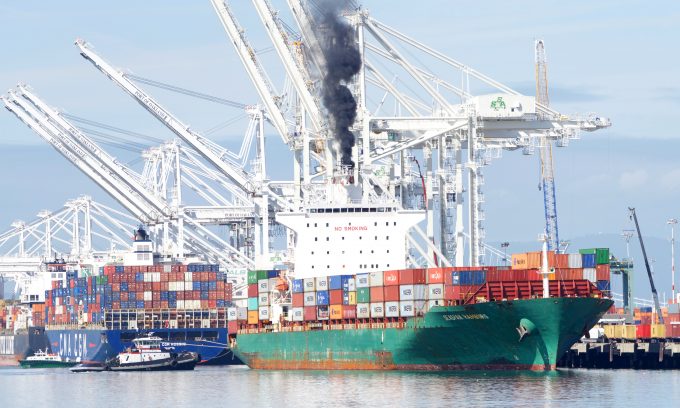European road freight stakeholders outline demands to EC
Yesterday marked the start of a new legislative term in the EU, and road freight ...
TFII: SOLID AS USUALMAERSK: WEAKENINGF: FALLING OFF A CLIFFAAPL: 'BOTTLENECK IN MAINLAND CHINA'AAPL: CHINA TRENDSDHL: GROWTH CAPEXR: ANOTHER SOLID DELIVERYMFT: HERE COMES THE FALLDSV: LOOK AT SCHENKER PERFORMANCEUPS: A WAVE OF DOWNGRADES DSV: BARGAIN BINKNX: EARNINGS OUTODFL: RISING AND FALLING AND THEN RISING
TFII: SOLID AS USUALMAERSK: WEAKENINGF: FALLING OFF A CLIFFAAPL: 'BOTTLENECK IN MAINLAND CHINA'AAPL: CHINA TRENDSDHL: GROWTH CAPEXR: ANOTHER SOLID DELIVERYMFT: HERE COMES THE FALLDSV: LOOK AT SCHENKER PERFORMANCEUPS: A WAVE OF DOWNGRADES DSV: BARGAIN BINKNX: EARNINGS OUTODFL: RISING AND FALLING AND THEN RISING

The EU’s ‘Fit for 55’ package announced on 14 July is the clearest policy-signal yet that the transition to net-zero is gathering steam. Aimed at transforming the European economy in pursuit of the EU’s ambitious climate goals, the package consists of a raft of legislative proposals designed to accelerate the decarbonisation of energy, land use and transport. It could mark the beginning of the end of the fossil fuel era for shipping.
The key catalyst, as had been widely anticipated, is for shipping to be included in the EU’s Emissions Trading System (ETS). Carbon pricing has long been regarded as the holy grail for incentivising the switch away from fossil fuels and the idea has attracted increasing support in the industry recently, though many had argued against a unilateral move by the EU, preferring to wait for the IMO to come up with a global plan for collecting and redistributing a global carbon levy.
The move to include shipping in the EU ETS will be phased-in over three years, but at current carbon prices of around $60 per tonne of CO₂, the cost of heavy fuel oil would eventually rise by close to $200 per tonne.
Together with measures in the legislative proposal, now known as the FuelEU Maritime Initiative, to incentivise uptake of renewable fuels and zero-emission technologies, EU projections are for fossil fuels to be largely phased out of international shipping’s fuel mix by 2050.
This is very much in line with the International Energy Agency’s recently published Net Zero scenario which calls for the industry’s greenhouse gas emissions to fall by 85% between now and mid-Century, but much more ambitious than the IMO’s target of a cut of just 50% in greenhouse gas emissions from 2008 levels, which is increasingly looking outdated.
The overall EU goal is to reduce carbon emissions across the continent by at least 55% by 2030 on the way to achieving climate neutrality by 2050. As if to underscore the urgency of these plans, last week’s policy announcement came against the backdrop of record rainfall and flooding across large parts of western Europe, flash floods in London and New York, and in the aftermath of the unprecedented ‘heat dome’ over the west coast of North America, the latest manifestations of extreme and deadly weather attributable to climate change.
In this context, with global mean temperatures continuing to rise, and the remaining ‘carbon budget’ to limit global warming to 1.5°C above pre-industrial levels being rapidly depleted, anguished debates about whether the EU is over-reaching by including shipping in its ETS or whether it would be better to consider a more global solution seem to miss the point. We simply do not have time to wait for the IMO to try to forge an improbable multi-lateral consensus amongst its politically, economically and socially disparate membership.
The proposed EU regulations now need to be agreed between the EU commission, parliament and member states. Industry bodies and environmental groups will seek changes, not least regarding the roles of LNG and biomass as transition fuels. And despite the inclusion of shipping in the ETS, more will need to be done to close the price gap between heavy fuel oil and renewables such as green ammonia and hydrogen.
Nevertheless, taken together with other recent developments in ESG-related regulation – the EU Taxonomy, for example – last week’s announcement should give forward-thinking companies and their stakeholders additional confidence about the policy trajectory and therefore provide a welcome spur to innovation and investment in zero-emission vessels and infrastructure.
Comment on this article